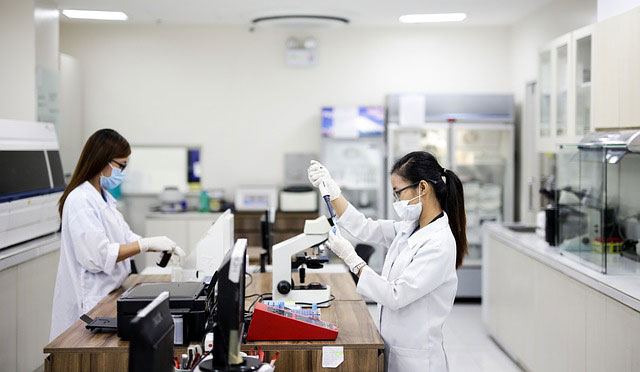The Thai language does not have an alphabet but rather uses a writing system which is called the abugida. Through this system, every new consonant may invoke an inherent vowel sound, such as an implied “a” or “o”. What makes matters even more complicated is that while consonants are written horizontally from left to right, vowels can be arranged above, below, or to the left or right of a consonant, or in a combination of positions. When it comes to medical translation services, especially from English to Thai or Thai to English, a few challenges can arise due to machine translation. Due to the peculiarities of the language, Thai language translation, especially in a medical context, poses several obstacles. Below, we identify some of them.
Word segmentation
Word segmentation refers to the placing of spaces or periods between words to indicate the end of a phrase or sentence and the start of a new one. Since Thai script is exactly that, a script, it does not segment different words and one would need to look at the holistic meaning to determine the accurate translation that’s required in the target language, in this case, English.
Sentence markings
Sentence markings are another challenge when it comes to medical translations. This is because there are no periods used in the language to indicate the start or the end of a sentence. Instead, certain interjections are used by Thai people such as “because” or “so” to indicate the start of the new sentence, but in machine translation, this can result in several run-on sentences, which are grammatically incorrect.
Word meaning ambiguity
A further challenge regarding medical translations to and from Thai is word meaning ambiguity, which a translator or even a machine can struggle with. One such example relates to the fact that there can be more than one word for the medical problem of a peptic ulcer. Which word(s) should be used in such a case and which one would convey the accurate and intended meaning?
Wrong lexical choices
Translators are also often found struggling with what is considered “wrong lexical choices”. Due to the difficulties in directly translating from or to English and Thai and due to the variety of different expressions available in Thai to describe one thing, challenges arise.
Missing words
Missing words pose a further problem. In Thai, there are sometimes no equivalent words to the English language and this can result in the adoption of an English word or looking for phrases to convey the intended meaning.
Singular vs plural
In Thai, if one were to say “book”, one specific word would be used, whereas if one were to change this word slightly to the plural form “books”, in Thai, it is more common to add a number to the word such as “two books” to convey the meaning of plurality.
Omission of pronouns
 Thai also often omits personal pronouns in daily conversation as well as in medical terminology, which can cause significant problems in translating as it would not be clear, for example, if the patient in a case would be a male or a female.
Thai also often omits personal pronouns in daily conversation as well as in medical terminology, which can cause significant problems in translating as it would not be clear, for example, if the patient in a case would be a male or a female.
Word order
Word order is a further challenge that arises with medical translations, as the sentence structure does not follow the English rules of subjects, objects, and verbs.
Absence of standardization
The absence of standardization of medical terminology is another issue that many translators struggle with. This can be seen in the usage of certain medical terms which have no Thai equivalent.
Other challenges
Thai translators and even machine translators may find that they also struggle with other linguistic challenges which include but are not limited to: inflectional errors, reordering errors, missing words, extra words, and lexical choice errors.
Conclusion
Based on our experience at 1-StopAsia, we have found that sometimes, our own translators prefer not to use machine translation (MT) when it comes to Asian languages. The reason is that it takes much longer to fix something broken. For example, editing an MT-translated text rather than just having a good translator and editor to do the work from the beginning. The expectation that MT is cheaper and easier is not always valid and in many cases is the other way around. And in the case of medical translations, when it comes to well-structured information and the fact that the term basis are to some extent the same due to medical terminology, it might seem that MT will work quite well, However, based on the rest of the text in a medical translation, pure MT it’s a risk we are simply not willing to take due to the impact of a wrongful translation. That is why it is always key to find the proper balance between advancing technologies and well-established and tested practices to deliver the best suited final result to our clients.
